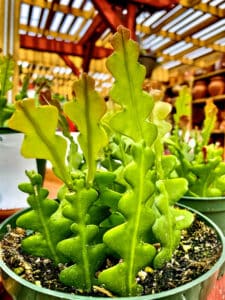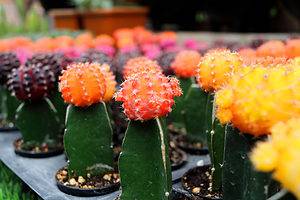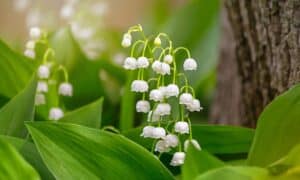Warm, tropical environments around the globe have gorgeous and distinctive palm trees as a defining feature of their landscapes. Several types of palm trees produce the two most well-known edible fruits, coconuts and dates, but it’s not always clear which palm trees produce which of these mouthwatering delicacies. Just as well, some palm trees product other types of fruit that are both edible and delicious. So what fruit grows on palm trees? Let’s take a look at some of the most common fruits that are produced by different palm tree species.
1. Coconuts
All around the tropics, coconut palm trees are cultivated because they do well on sandy soil, with lots of sunshine, warm temperatures, and high humidity. Because of the popularity and extensive usage of the coconut fruit, it is one of the most well-known varieties of palm trees. The coconut is not a real nut despite its name; rather, it is what is known as a drupe, a fruit with a fleshy layer.
There are several uses for the coconut. The white interior flesh, or meat of the coconut, produces a type of edible oil that is utilized in cooking and margarine production. Moreover, the meat of the coconut can be dried, fried, or consumed raw. Coconut milk, a nutritious beverage that can also be used in cooking, can be made by pressing the coconut meat for its liquid.
The coconut water that fills the coconut’s hollow interior is a delicious, nutrient-rich beverage that has a lot of sugar, vitamins, minerals, and fiber. The tough coconut shell is often used to create household items, such as food bowls and clothing buttons. The coconut palm plant’s blooming flower releases a sap that can be used as a beverage. Palm wine can also be made by fermenting this sap. Heart-of-palm, or the buds of the coconut flowers, are also quite tasty and have become popular as a “meat replacement” in the vegetarian and vegan community. They are a delicacy and are often used in dishes for fine dining.
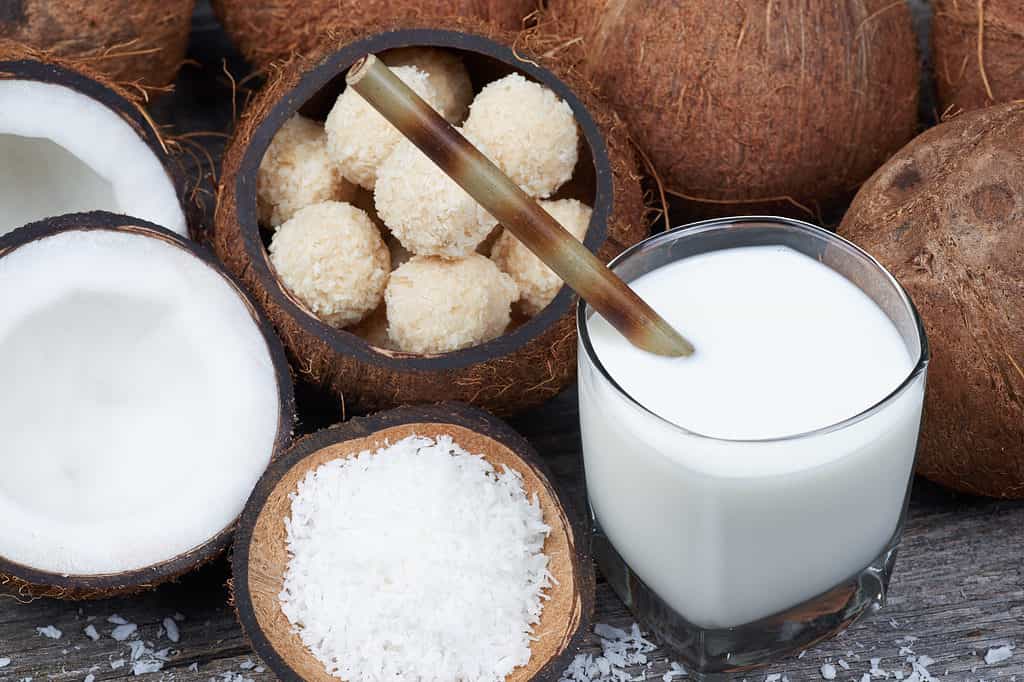
Coconuts (pictured) are used for many different things, particularly when it comes to cuisine.
©Krzycho/Shutterstock.com
2. Dates
Dates are a delicious, dietary fiber-rich fruit that is cultivated on certain palm plants called date palms. Date palms are specifically planted for their fruit and likely originated around the Persian Gulf, but due to their popularity, they are now grown everywhere that has a suitable environment. Dates are often referenced in ancient literature and have long been a staple ingredient in the Middle East.
The date fruit can be used in a variety of ways, including as food. Dates can be consumed fresh, dried, or pitted and filled with a variety of ingredients, such as peanut butter or cream cheese. Several puddings and sweets, especially those with Middle Eastern influences, include chopped dates that are occasionally drizzled with sweet syrups.
In western countries, dates are a common holiday treat that is usually baked into bread with other customary components like nuts and cinnamon. The richness of the spices provides a lovely counterpoint to their sweet flavor. In some Islamic regions, date juice is utilized as a non-alcoholic champagne substitute. Date seeds can be crushed up and used as inexpensive animal feed as well.
Dates are utilized in many traditional medicines due to their high tannin content; they have a natural astringent and cleansing effect and can be used for everything from fever and sore throats to colds and other respiratory ailments. A special syrup that lends sweetness to dishes and recipes can be made from the sap of date palm trees.
Date oil is often used in soap and cosmetics. Because it only needs little chemical processing, it is both affordable and organic. Date seeds can be used to stretch coffee beans to create greater volume and enhance coffee flavor. They can also be burnt in place of charcoal.
The date palm tree’s leaves are most famous for being used on Palm Sunday in Christian traditions. They are also used in Northern Africa to construct houses for protection; due to their size, waterproofness, and durability, they are ideal for a variety of tasks, including basket-weaving and the manufacture of fans. Date palm trees have relatively light wood that is used for crafts as well as the construction of infrastructure, such as signs and bridges. While not the most durable wood, date wood is relatively easy to transport, quick to cut, and weatherproof. Date wood can also be burnt to use as fuel as well.
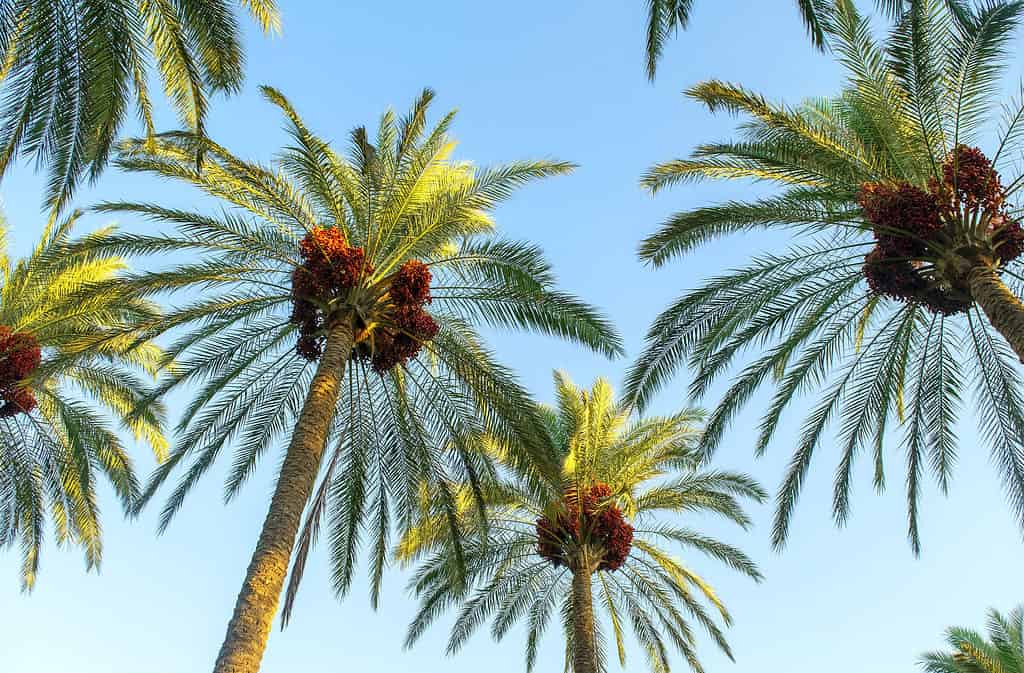
Date palms (pictured) are used for their fruit as well as their fronds and wood.
©iStock.com/Viktoriya Fivko
3. Acai
Acai berries do not grow on bushes, unlike many other berries. The acai berry has been hailed as a superfruit because of its antioxidants and healthy components. They are really the fruits of the subtropical acai palm, scientifically classified as Euterpe oleracea. After a few years, this very large palm species starts to produce acai berries. At this period, smaller offshoots will also yield fruit. When mature, acai berries turn purple and resemble blueberries in appearance.
Acai berries are a common addition to meals in the Amazon rainforest. They must first be soaked to soften the rough outer peel before being crushed to create a dark purple paste in order to make them palatable. They have an earthy flavor that is sometimes compared to a mix between dark chocolate and blackberries. Acai berries are only grown in specific regions, and they don’t grow elsewhere. They are offered for export as pressed juice, dry powder, or frozen fruit purée. Acai oil is used in various non-food goods like body lotions, while acai berries are occasionally used to flavor foods like candy and ice cream.
4. Peach Palm Fruit
This type of palm tree is indigenous to Costa Rica and is also referred to as the peach palm or Bactris gasipaes. The tree’s trunk is coated in brittle, jagged spines. It yields excellent red fruits that resemble peaches and can be used to create jams. Up to five clusters of 50 to 80 orange-reddish fruits, each about two to three inches in diameter, can be seen on a typical 60-foot mature peach palm. On the tree and after harvest, the fruit preserves well and stays ripe.
The fruit of the peach palm is not a true peach, but it is quite delicious. The peach palm fruit is typically fried since it has a harsh flavor even when ripe. The fruit is about the size of a date and, depending on the type, turns yellow or red when mature. Grown commercially in some regions of South and Central America, the peach palm fruit is rich in vitamins A, B, C, and E as well as carbs and dietary fiber. It is considered a particularly useful food source.
The fruits, sometimes known as palm chestnuts, are often cooked and seasoned with sea salt or honey. After boiling, the slightly mealy and dry meat readily separates from the seed and is fermented to create a beverage. Locals utilize the copious oil produced by the seeds in their cuisine as well. Outside of its use for fruit, the peach palm tree’s sturdy wood is utilized for construction and for creating bows and boats.
5. Jelly Fruit
The edible, tart, and sweet fruit of the jelly, pindo, or wine palm (classified as Butia capitata) is commonly used to make jellies and wines. While it is native to Brazil and the generally arid regions of South America, it is also grown as a landscape plant in some sections of California as well as in the southeastern United States’ Atlantic and Gulf regions. The fruit clusters on the relatively short trees can be accessed without a ladder, making them quite easy to harvest. Similar to enormous bunches of grapes, the golden fruit grows in clusters. The jelly fruit is fibrous when eaten raw, therefore some people chew it to extract the juice while throwing away the fibrous parts.
The golden flesh is slightly fibrous, semi-aqueous, chewy, and succulent beneath the surface. After suckling the juice from the meat, many jelly fruit enjoyers opt to remove the fibers since they can be difficult and unpleasant to digest. There is a huge, black seed that is inedible when raw that is also present in the center of the meat. When fully mature, jelly palm fruits should be smooth to the touch and taste tropical, delicately nutty, and sweet-tart, with prominent pineapple fruity undertones and overtones of apricot and coconut.
6. Betel Nuts
In certain regions of Asia, the fruit of the areca palm is used as a stimulant and health enhancer. The fruit of the area palm tree, often known as the betel nut, has been used for thousands of years to alleviate indigestion and increase energy. The drawback is that it’s utilized in certain nations in a chewable combination with tobacco and slaked lime. Similar to how drinking coffee is commonly used as a stimulant in parts of the Western world, chewing this betel quid is embedded in the culture of male laborers. In Taiwan, mouth cancer cases connected to the popular quid combination have become quite serious.
Outside of their use as betel nut producers, varieties of areca palms are utilized as patio plants or even as potted decorative plants in the United States.
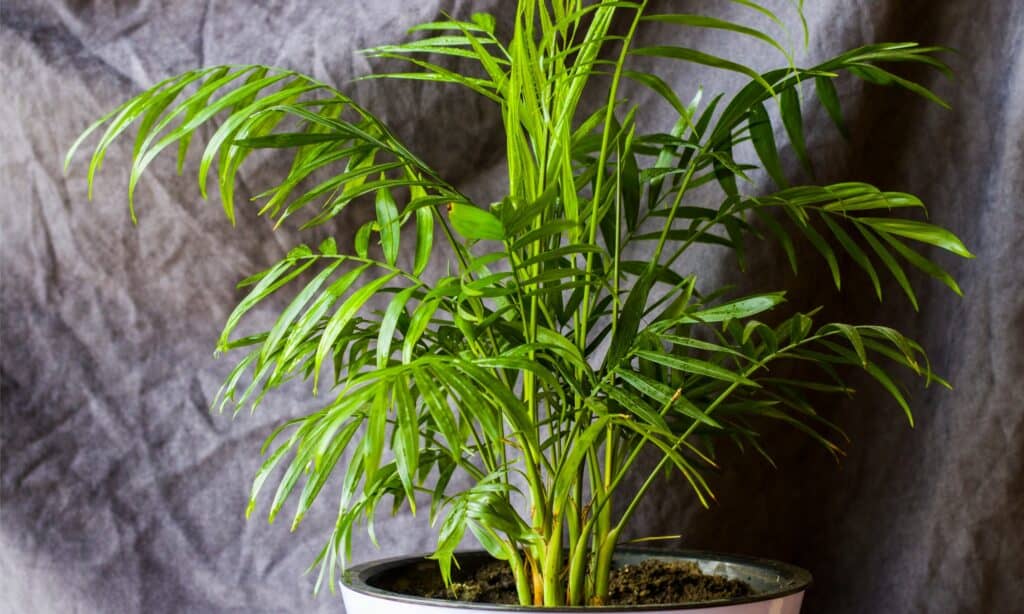
The areca palm (pictured) is used as a houseplant as well as for the betel nuts it produces.
©iStock.com/Tamar Dundua
7. Saw Palmetto Palm Fruit
The fruit of the saw palm or palmetto tree (which is classified as either Serenoa repens or Serenoa sabulata) is used to make saw palmetto, a supplement that is very widespread in health food stores. While native to Florida, saw palms also grow successfully in other places with temperatures that never go below 20 degrees F.
The berries of this unique palm plant were originally employed by Native Americans as a food and medicinal source, and by early colonizers as a means of fending off famine. The berries have a fragrant scent and are dark blue to practically black when they are fully mature. The berries are often not sweet; they might even be harsh when initially eaten. As a result, the berries are often dried for use in teas and tinctures or powdered and added to capsules as a supplement to support men’s health.
How cool are these palm tree fruits? Keep in mind that if you decide to grow your very own palm species indoors that they are very unlikely to grow fruit. Even if you live in the right USDA hardiness zone to grow palms outside, they might not produce fruit either. However, if you live in an area where a particular palm is native, you might get lucky and eventually get some fruit from your outdoor tree.
The photo featured at the top of this post is © PATRICIA PECEGUINI VIANA/Shutterstock.com
Thank you for reading! Have some feedback for us? Contact the AZ Animals editorial team.



